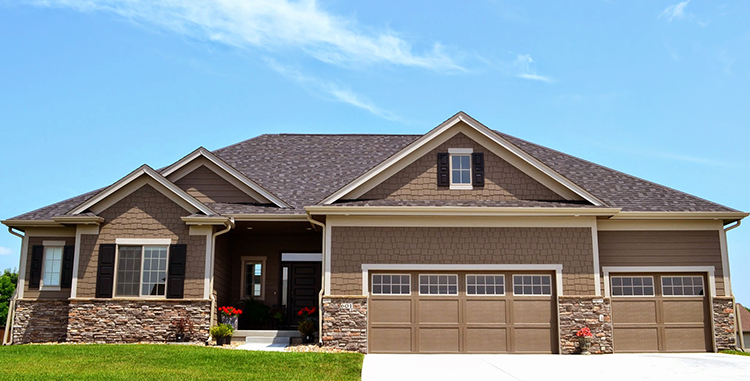In Basic Anatomy of a Garage Door (Part 1), we defined various components—tracks, rollers, door panels, hinges, and the lock bar—and briefly described what each of them does. Today, we’re going to touch on several other important aspects of your garage door system. A little background knowledge will better equip you to identify problems with your garage door or opener so you can call a professional for help when necessary.
Torsion Springs
These are the springs you have to be careful about; never attempt to adjust or repair them yourself. Torsion springs are constantly under extreme tension. They’re used to counterbalance the weight of your garage door so it can be lifted more easily. Torsion springs are horizontally positioned above the garage door when it’s closed.
Pulley, Drums, and Cables
Cables, made of strong, flexible metal, run along the right and left sides of the garage door. They’re lifted and lowered by the pulley. When the door rises, the cables wind around the drums. When the door closes, they unwind again.
If there’s too much tension in the cables, your door might not fully close. If there isn’t enough, the door may have trouble opening and place more stress on your garage door system than it should, which can lead to early failure for certain components. It’s also possible for the cables to wind incorrectly around or falls off the drums. Call a professional for help if you experience any of these problems.
Operator
The motor (operator) initiates the movement of your garage door, but it doesn’t do the heavy lifting; the torsion springs do. The operator supplies the energy needed to open and close the door safely. If you notice excessive noise or grinding when your door is in motion, the operator may be worn down and need to be replaced.
Photo Eyes
The photo eye sensors—located on the right and left sides of your garage door opening, about six inches from the ground—send a beam of light across from one side to the other. If this beam is broken, the door won’t close. This safety feature prevents the door from closing on a person or object in the door’s path.
It’s important to check these sensors occasionally to ensure they’re working properly. If one gets bumped or dirty, it may not be able to send or receive the signal to or from the other sensor. If your garage door won’t close for you and nothing seems to be wrong, check these sensors to make sure they’re working properly. They may simply need to be adjusted.
Emergency Release Handle
The red handle or string that hangs down in your garage is the emergency release for your garage door. If this is pulled,
Weather Stripping
The weather stripping at the bottom of your garage door is designed to keep wind, rain, and other elements out of your garage. If this gets ripped or becomes worn, it won’t be able to effectively do its job and seal out air and moisture. Keep an eye on this piece and replace it if you notice unusual drafts in the garage, water seeping inside when it rains or snows, or cracks or rips in the rubber.
If you need garage door service in Iowa, call WD Door! We will repair or replace old or broken garage doors. Call us with questions, or click below to request a free estimate.

